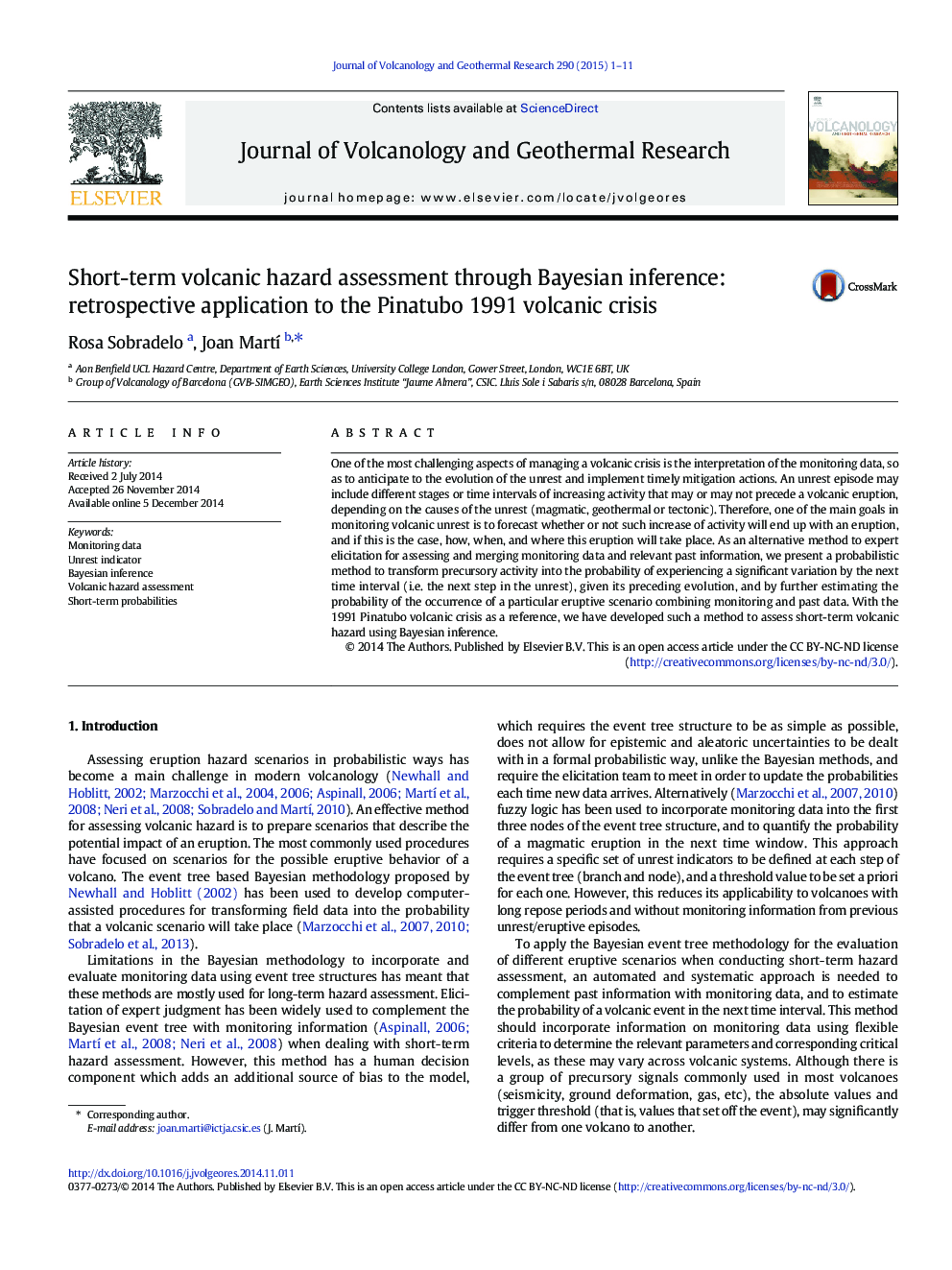| Article ID | Journal | Published Year | Pages | File Type |
|---|---|---|---|---|
| 6439951 | Journal of Volcanology and Geothermal Research | 2015 | 11 Pages |
Abstract
One of the most challenging aspects of managing a volcanic crisis is the interpretation of the monitoring data, so as to anticipate to the evolution of the unrest and implement timely mitigation actions. An unrest episode may include different stages or time intervals of increasing activity that may or may not precede a volcanic eruption, depending on the causes of the unrest (magmatic, geothermal or tectonic). Therefore, one of the main goals in monitoring volcanic unrest is to forecast whether or not such increase of activity will end up with an eruption, and if this is the case, how, when, and where this eruption will take place. As an alternative method to expert elicitation for assessing and merging monitoring data and relevant past information, we present a probabilistic method to transform precursory activity into the probability of experiencing a significant variation by the next time interval (i.e. the next step in the unrest), given its preceding evolution, and by further estimating the probability of the occurrence of a particular eruptive scenario combining monitoring and past data. With the 1991 Pinatubo volcanic crisis as a reference, we have developed such a method to assess short-term volcanic hazard using Bayesian inference.
Related Topics
Physical Sciences and Engineering
Earth and Planetary Sciences
Geochemistry and Petrology
Authors
Rosa Sobradelo, Joan MartÃ,
